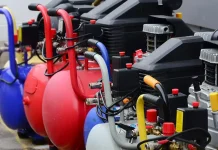The world of vaping offers an incredible array of devices and e-liquids, catering to diverse preferences, from discreet nicotine delivery to massive vapor clouds and intricate flavor profiles. Understanding the different types is key to finding your ideal vaping experience. For more details visit: https://hookahmarket.life/
I. Exploring the Different Types of Vape Devices
Vape devices can be broadly categorized by their complexity, power, and the vaping style they support.
A. Vaping Styles: MTL vs. DTL vs. RDL
Before diving into devices, it’s essential to understand how people inhale vapor:
- Mouth-to-Lung (MTL): This mimics traditional cigarette smoking. You draw vapor into your mouth first, hold it, then inhale into your lungs.
- Characteristics: Tighter airflow, less vapor, higher nicotine strengths (often nic salts), pronounced “throat hit.”
- Best for: Smokers transitioning to vaping, those seeking discretion, and vapers who prefer a strong nicotine sensation.
- Direct-to-Lung (DTL) / Sub-Ohm Vaping: You inhale vapor directly into your lungs in one continuous breath, like breathing deeply.
- Characteristics: Open airflow, large vapor clouds, smoother throat hit, lower nicotine strengths.
- Best for: Experienced vapers, cloud chasers, and flavor enthusiasts. Generally not recommended for beginners due to the overwhelming vapor production.
- Restricted Direct-to-Lung (RDL): A hybrid between MTL and DTL, offering a slightly tighter draw than full DTL but more vapor than MTL. Increasingly popular for its versatility.
B. Device Categories:
- Cig-a-Likes:
- Description: The earliest vape devices, designed to resemble traditional cigarettes in size and appearance, often with a glowing tip.
- Pros: Very simple, discreet, highly portable.
- Cons: Limited battery life, low vapor production, often pre-filled (limited flavor choice), largely outdated and less satisfying for many.
- Best for: Absolute beginners looking for the most basic transition, but often quickly outgrown.
- Vape Pens:
- Description: Cylindrical, pen-shaped devices, typically larger than cig-a-likes. They usually have a built-in battery and a refillable tank or pod.
- Pros: Easy to use, better battery life than cig-a-likes, good flavor, often MTL-focused, refillable.
- Cons: Still relatively basic features, requires occasional coil changes.
- Best for: Beginners seeking a step up from disposables or cig-a-likes, and vapers who want a simple, reliable, and portable device.
- Pod Systems:
- Description: Compact, lightweight devices that use replaceable or refillable “pods” containing the coil and e-liquid. They’ve become incredibly popular.
- Pros: Extremely user-friendly, highly portable, excellent for MTL vaping, efficient with nicotine salts, modern designs.
- Cons: Smaller battery and e-liquid capacity than larger mods.
- Variations:
- Closed Pod Systems: Use pre-filled, non-refillable pods (e.g., Elf Bar Elfa Pro). Utmost simplicity but limited flavor choice and can be more expensive.
- Open Pod Systems (Refillable): Allow users to refill pods with their own e-liquid and often replace coils (e.g., Uwell Caliburn, Vaporesso XROS). More economical, vast e-liquid choice, highly recommended for beginners.
- Pod Mods: A crossover, more powerful pod systems that approach box mod functionality with screens, adjustable wattage, and larger batteries (e.g., VOOPOO Drag X). Can support RDL/DTL.
- Disposables:
- Description: Pre-filled, pre-charged, single-use devices. You use them until the e-liquid runs out or the battery dies, then discard.
- Pros: Ultimate simplicity, no maintenance, very portable.
- Cons: Most expensive long-term, significant environmental waste, often unregulated nicotine strengths/flavors in some markets. Many regions are banning or restricting them due to environmental and health concerns.
- Best for: Absolute beginners looking for a trial or occasional use, but not sustainable for long-term vaping.
- Box Mods (Advanced Personal Vaporizers – APVs):
- Description: Larger, typically box-shaped devices with powerful internal or external batteries. They feature advanced chipsets, adjustable wattage/voltage, temperature control, and use separate, larger tanks with replaceable coils.
- Pros: Highly customizable, massive vapor production, long battery life, intense flavor.
- Cons: Bulkier, more complex to use and maintain, generally for DTL vaping.
- Variations:
- Regulated Mods: Feature safety protections and adjustable settings. Most common.
- Mechanical (Mech) Mods: Unregulated devices with no safety features, direct battery power. Only for highly experienced vapers who understand Ohm’s Law and battery safety.
II. Exploring the Different Types of E-Liquids (Vape Juice)
E-liquids are the fuel for your vape, typically composed of four main ingredients: Propylene Glycol (PG), Vegetable Glycerin (VG), flavorings, and nicotine (optional).
A. PG vs. VG: The Base Liquids
The ratio of PG to VG significantly impacts the vaping experience.
- Propylene Glycol (PG):
- Characteristics: Thinner consistency, good flavor carrier, produces a stronger “throat hit.”
- Ideal for: MTL vaping, beginners transitioning from smoking (mimics throat sensation), and devices with smaller coils.
- Vegetable Glycerin (VG):
- Characteristics: Thicker consistency, produces denser vapor clouds, smoother throat hit, slightly sweet taste.
- Ideal for: DTL/sub-ohm vaping, cloud chasers, and vapers who prefer a very smooth inhale. Can gunk up coils faster in some devices due to its thickness.
B. Common PG/VG Ratios:
- 50/50 PG/VG: A balanced blend, versatile for many MTL and RDL devices. Offers a good balance of flavor, vapor, and throat hit. Common for nicotine salts.
- High PG (e.g., 60PG/40VG, 70PG/30VG): Stronger throat hit, excellent flavor, less vapor. Best for MTL devices.
- High VG (e.g., 70VG/30PG, 80VG/20PG): Large vapor clouds, smoother throat hit, slightly less intense flavor. Best for DTL/sub-ohm devices with larger coils.
C. Nicotine Types:
- Freebase Nicotine:
- Description: The traditional form of nicotine, typically found in most older and some modern e-liquids.
- Characteristics: Provides a more pronounced “throat hit” as nicotine strength increases. Less efficient absorption into the bloodstream compared to nic salts.
- Strengths: Commonly available from 0mg up to 18mg (or 24mg in some regions). Lower strengths (3mg, 6mg) are popular for DTL, while higher strengths (12mg, 18mg) are for MTL.
- Nicotine Salts (Nic Salts):
- Description: A newer form of nicotine, chemically altered to be less alkaline, allowing for higher concentrations to be vaped smoothly.
- Characteristics: Smoother throat hit even at high strengths, faster nicotine absorption (mimics smoking more closely).
- Strengths: Often available in strengths like 10mg, 20mg, 30mg, even up to 50mg in some markets.
- Ideal for: MTL pod systems, ex-smokers, and vapers who need higher nicotine levels without the harsh throat hit of freebase.
D. Flavorings:
E-liquids come in an almost endless array of flavors, categorized broadly into:
- Fruity: Berries, citrus, tropical blends.
- Dessert: Custards, pastries, cakes, chocolates.
- Mint/Menthol: Cool, refreshing flavors.
- Tobacco: Mimicking traditional cigarette or cigar flavors.
- Drink: Sodas, coffee, teas.
By understanding these different types of devices and e-liquids, vapers can make informed choices that align with their personal preferences, goals, and vaping style, ensuring a satisfying and enjoyable experience.










